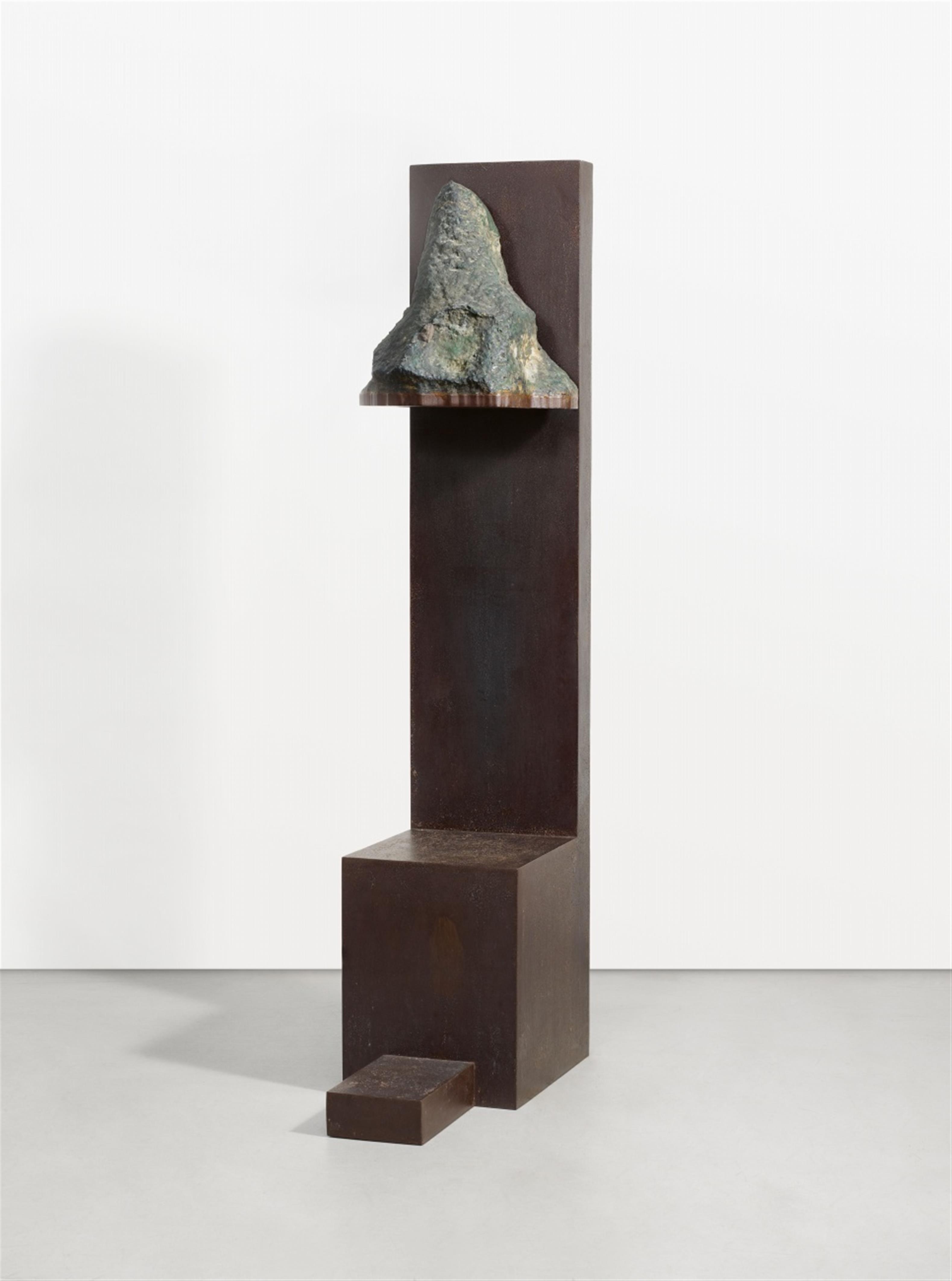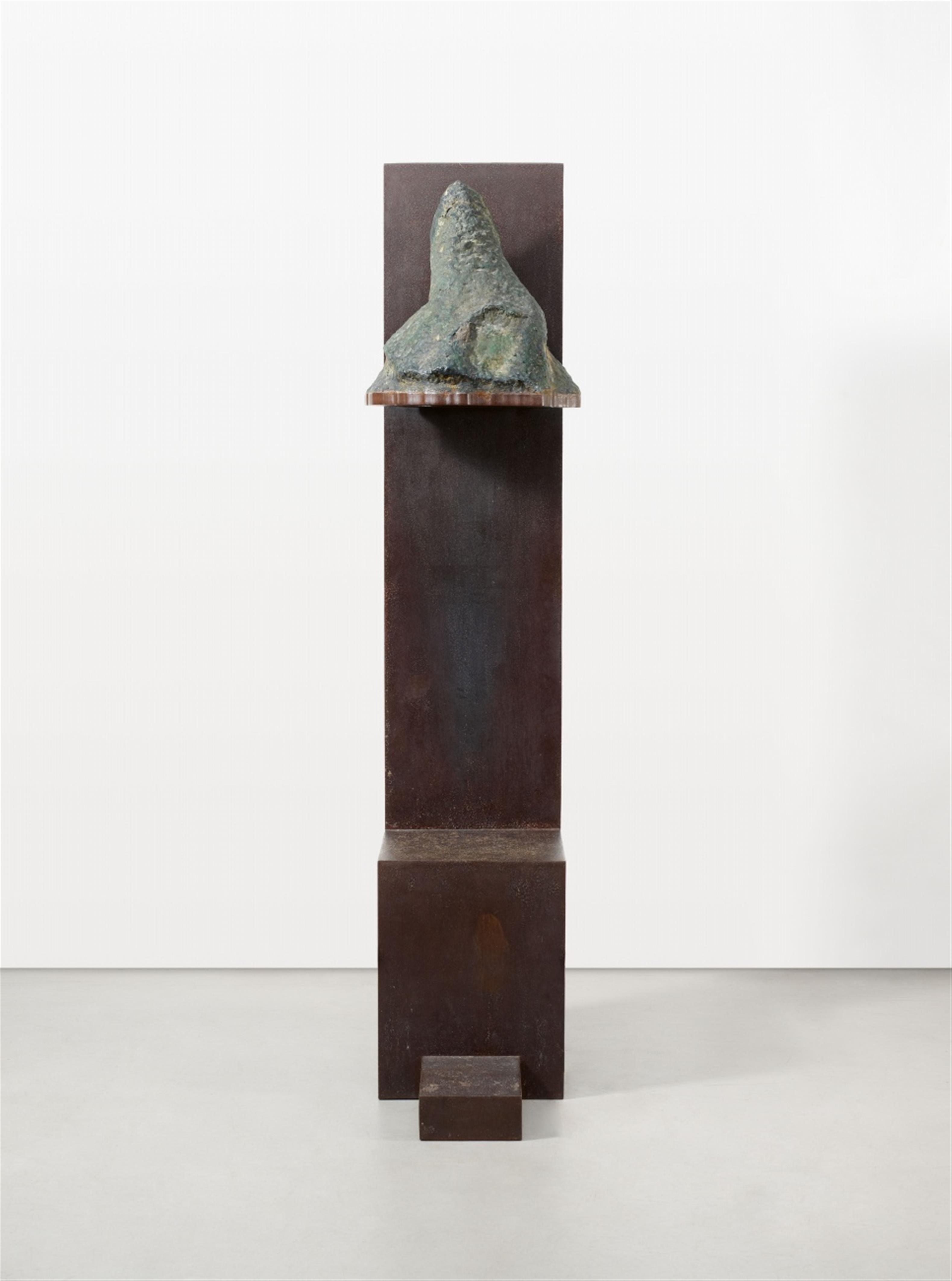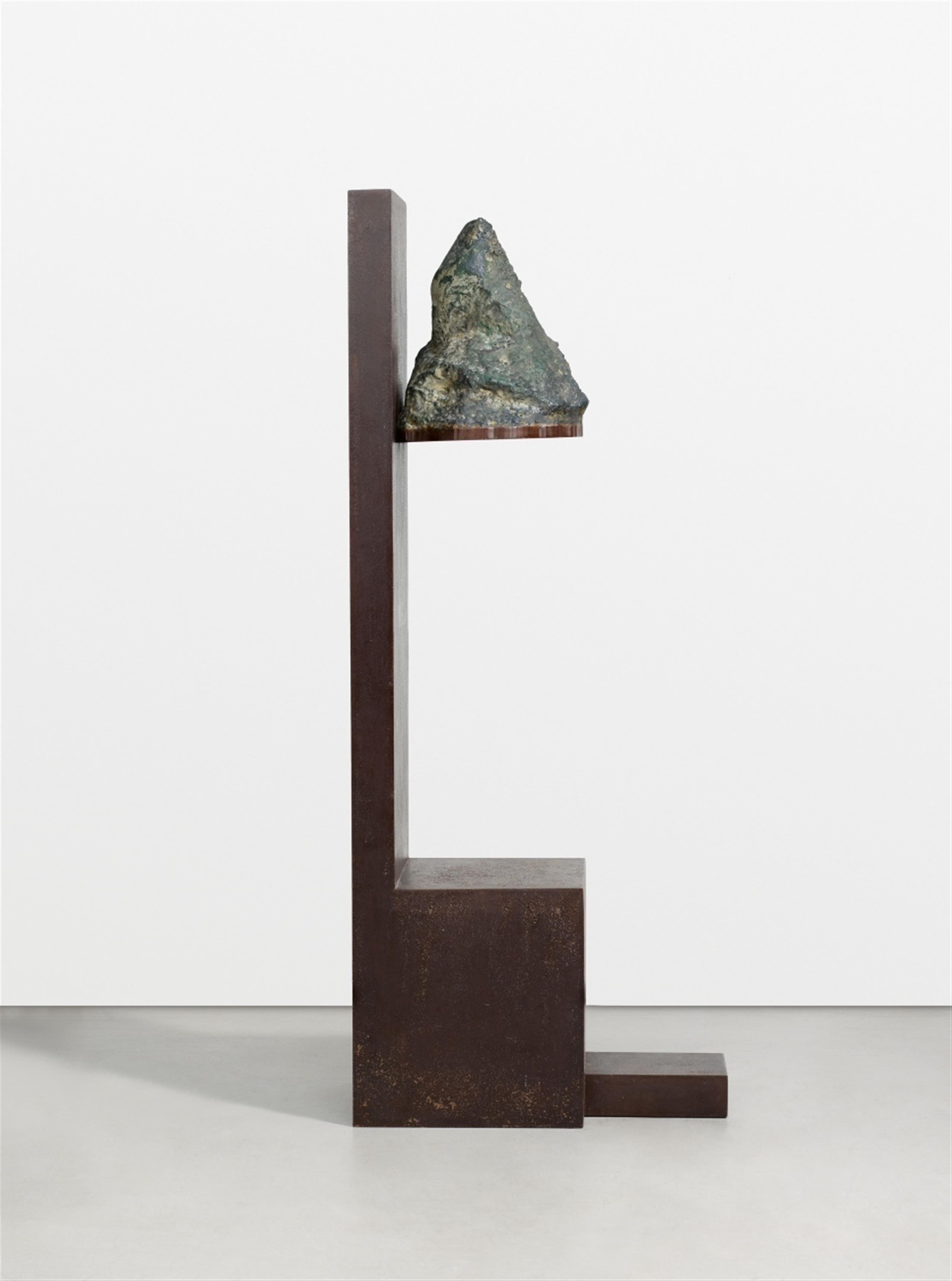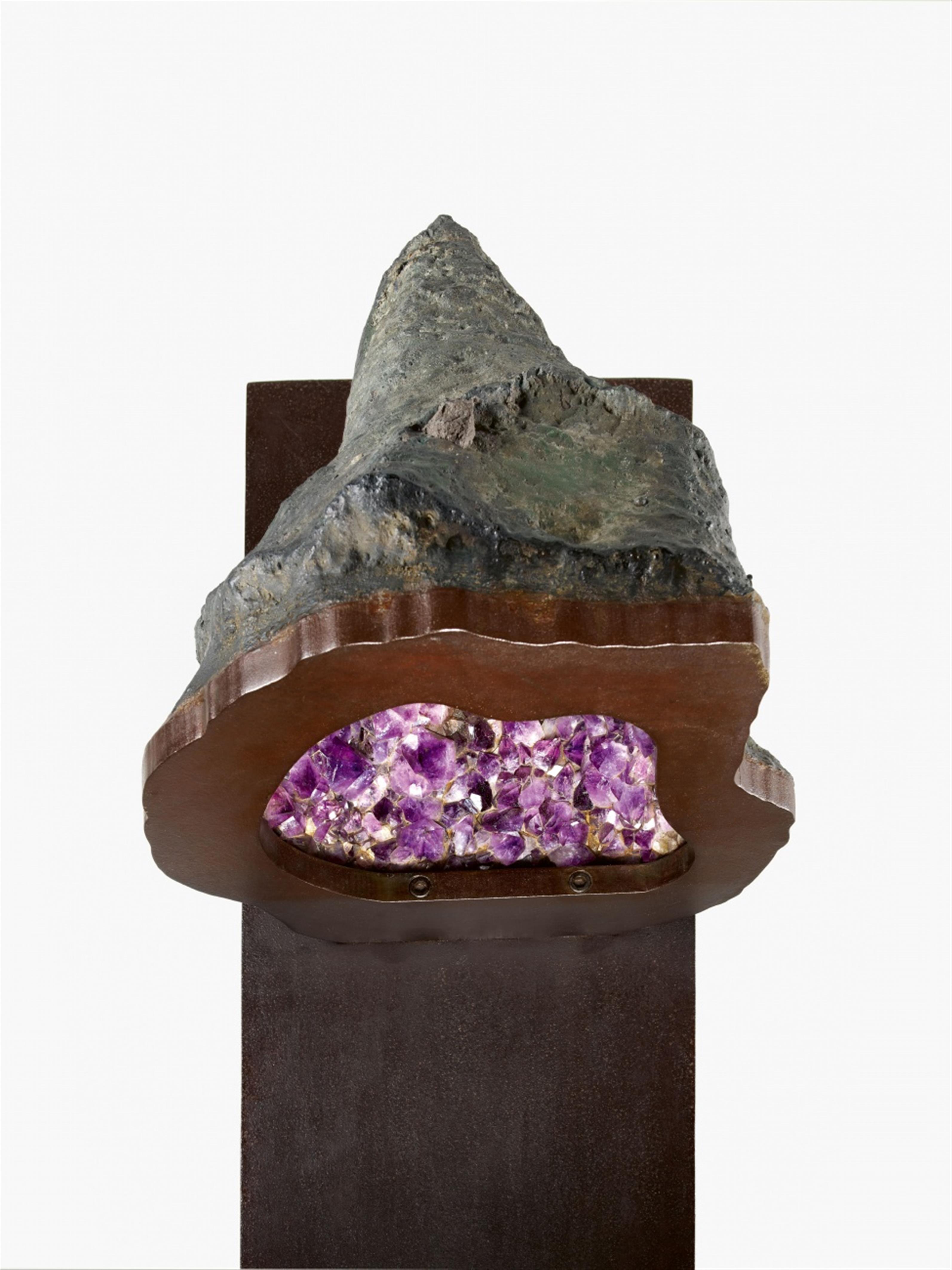Marina Abramovic
From: Chairs for departure with helmet
1991
Iron and amethyst erratic. 200 x 40 x 82 cm. One of two sculptures from this series, each of which was executed differently. - Minor traces of age.
Information for the user:
"Sit down
Put your head under the helmet
Eyes closed
Motionless
Leave."
(Marina Abramovic)
Born in Belgrade in 1946 and now living in New York, Marina Abramovic is a ground-breaking performance artist and one of the most important artist-personalities of today. Spanning more than five decades, paintings, films, objects and installations serve as the outcome of her performative work in which the process is more important than the result. From the beginning, Abramovic worked on the conjunction between pictorial and stage art. “Art is the transformation of painting” is one of the artist's fundamental statements about her work. Thus since the 1970s she has been using her body as an object and a medium in her strenuous, long performances, sometimes lasting for days, to sound out physical, mental and emotional limits. Often she risks her life in the search for increased awareness, transcendence and self-evaluation. Her artistic approach also questions human power structures and hierarchies, equating memory, pain, loss, perseverance and trust on a level with time. As a viewer, we can only partly participate in her experiences of the handling of her own body as a shared experience. Performance is a matter of the moment; it is difficult to document her and re-view, unless the camera directly accompanies the event as part of the work. Tools such as this archaic-looking iron chair are a legacy, mystically loaded objects that remain as a reminder of the process. Following her separation from Ulay (Frank Uwe Laysiepen) in 1988, whom she had had lived with for more than a dozen years and performed together as a “continuous work”, Marina Abramovic began to work with interactive, so-called transitory objects, involving the visitors in performance actions. For example, an iron chair with an oversized natural amethyst from Brazil, as large as a helmet, attached to the backrest like a canopy, under which people sit in curious anticipation, like a dignitary under the sky, like a saint under a protective stone canopy on Gothic facades. With this participative, symbolically-loaded work, Abramovic brings her art physically into the room. But, in the strict sense, these physical legacies are not to be thought of as sculptures, but, as the artist pointedly explains, “as vehicles for inner journeys, work tools that can be taken out of the equation as soon as one's own way has been found."
Provenance
Acquired directly from the artist; private collection, South Germany
Literature
Friedrich Meschede (ed.), Marina Abramovic, Wartesaal, exhib.cat. Neue Nationalgalerie Berin, Ostfildern-Ruit 1993, pp.272-275 with illus.
Exhibitions
Paris 1991 (Galerie Enrico Navarra), Marina Abramovic








